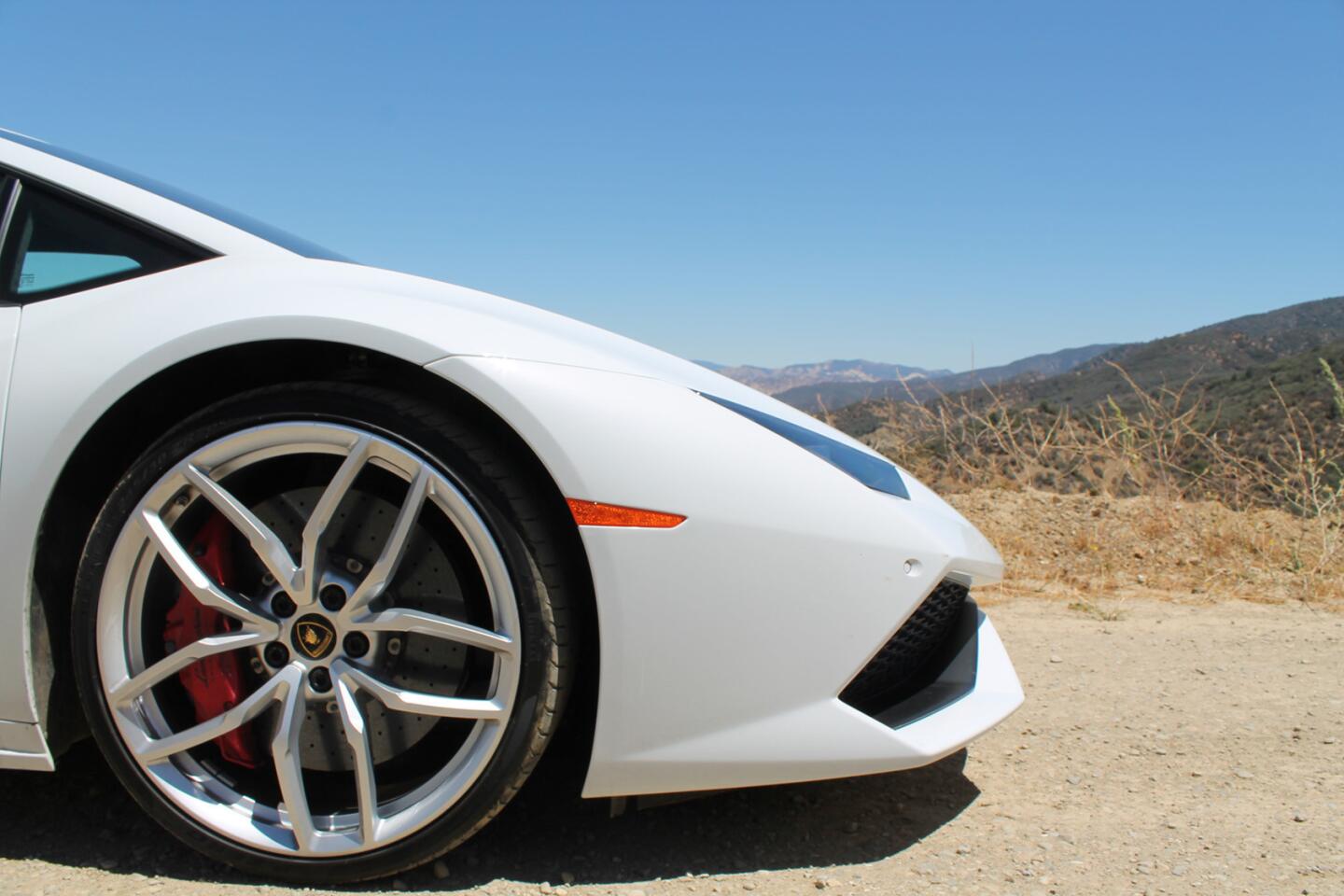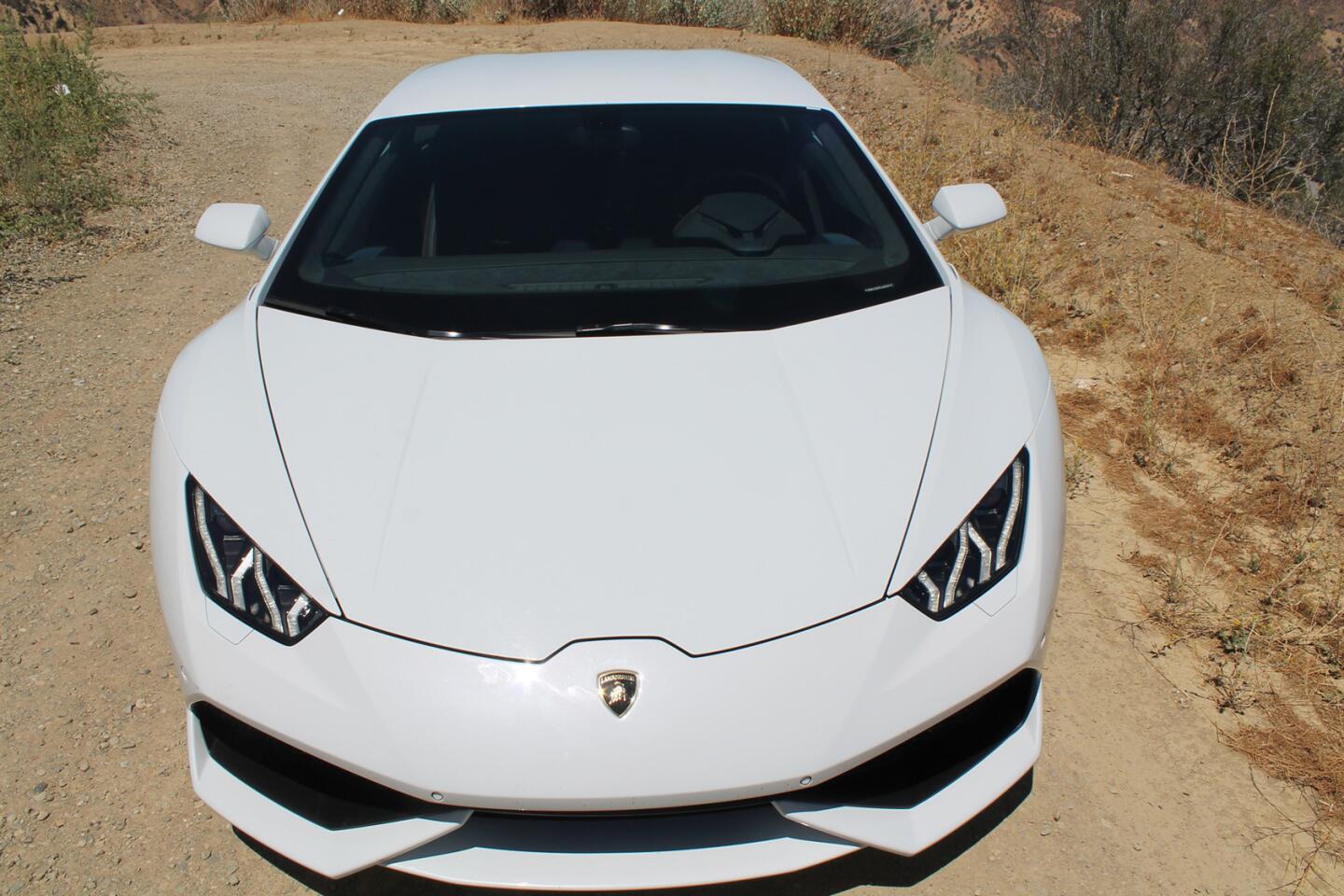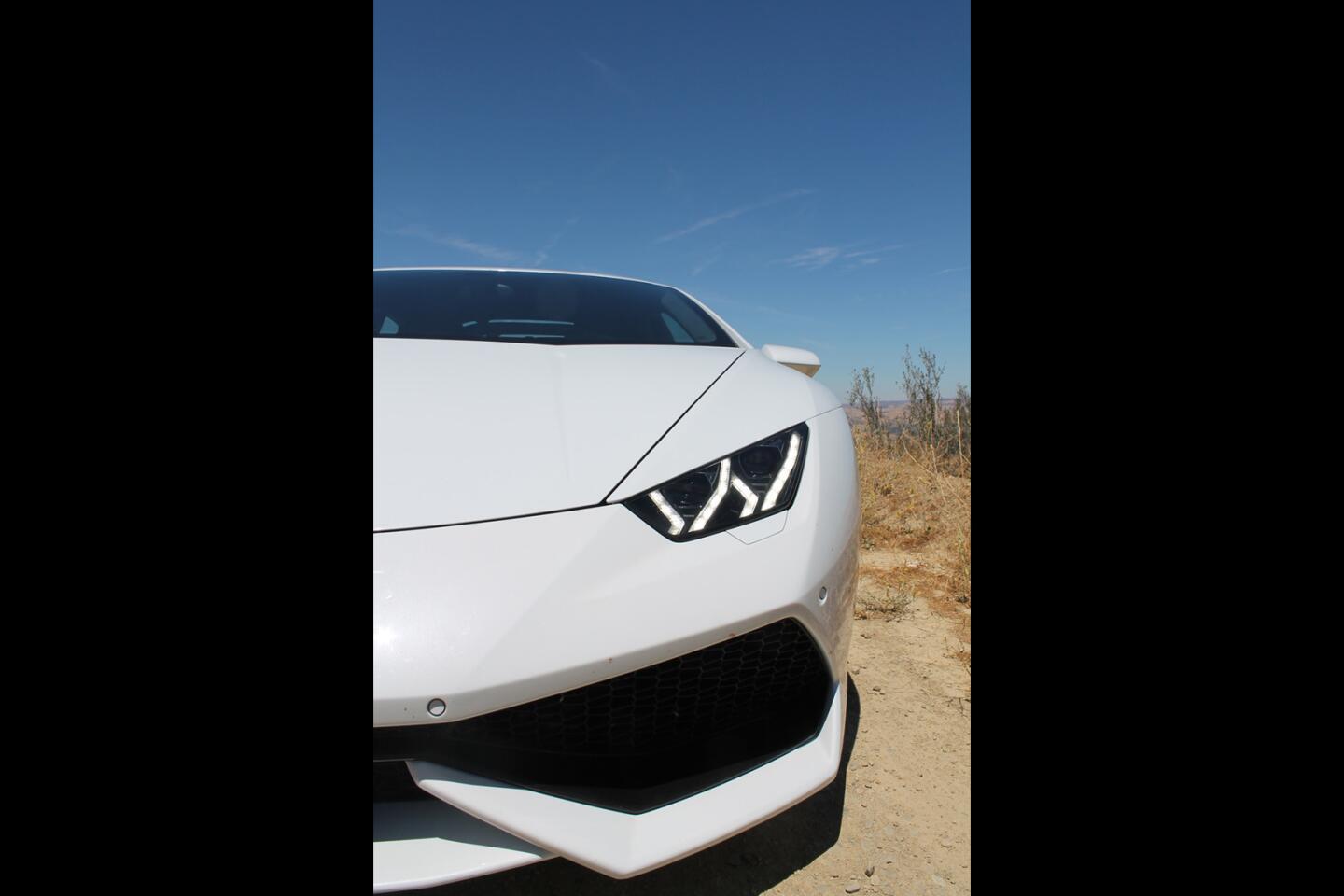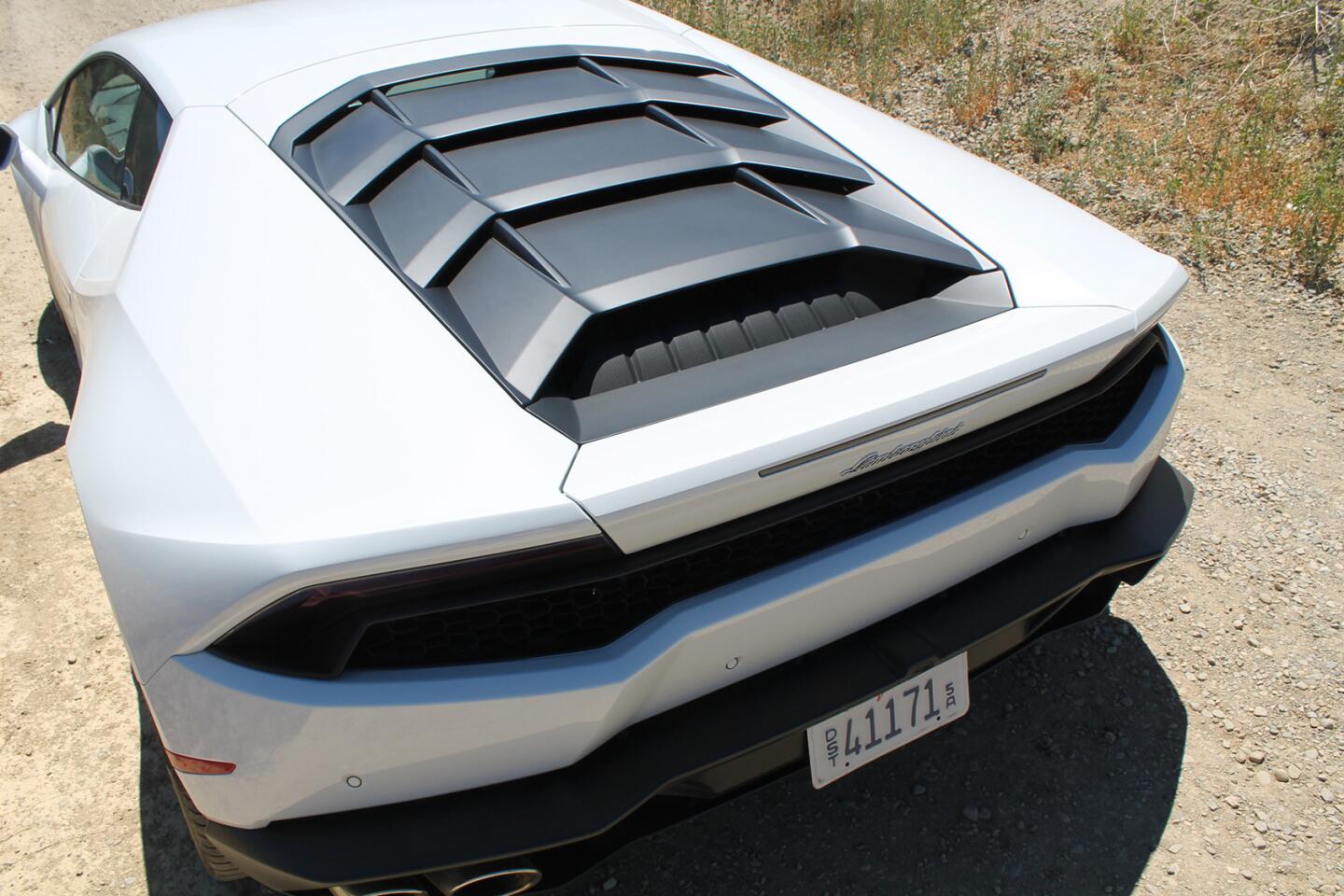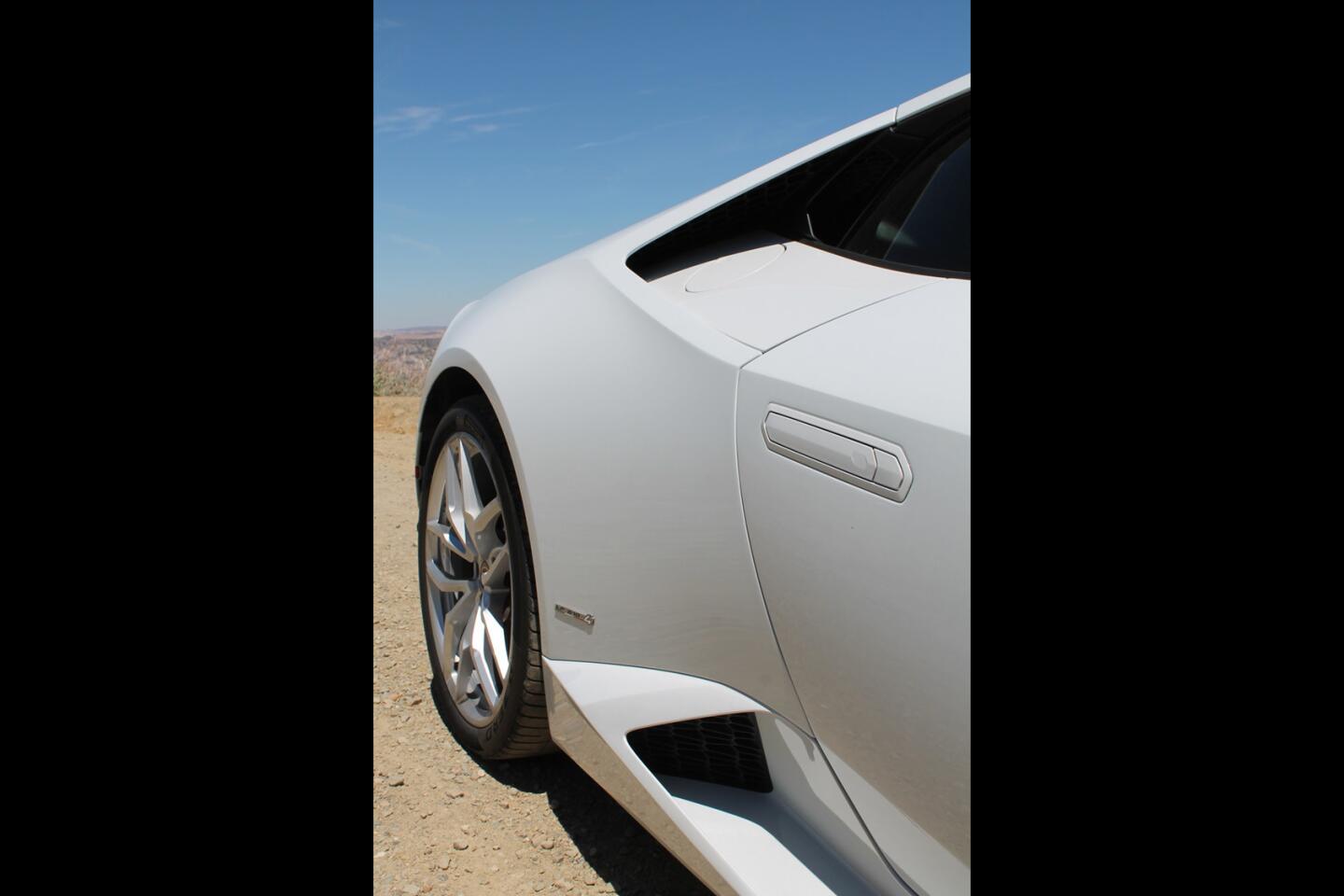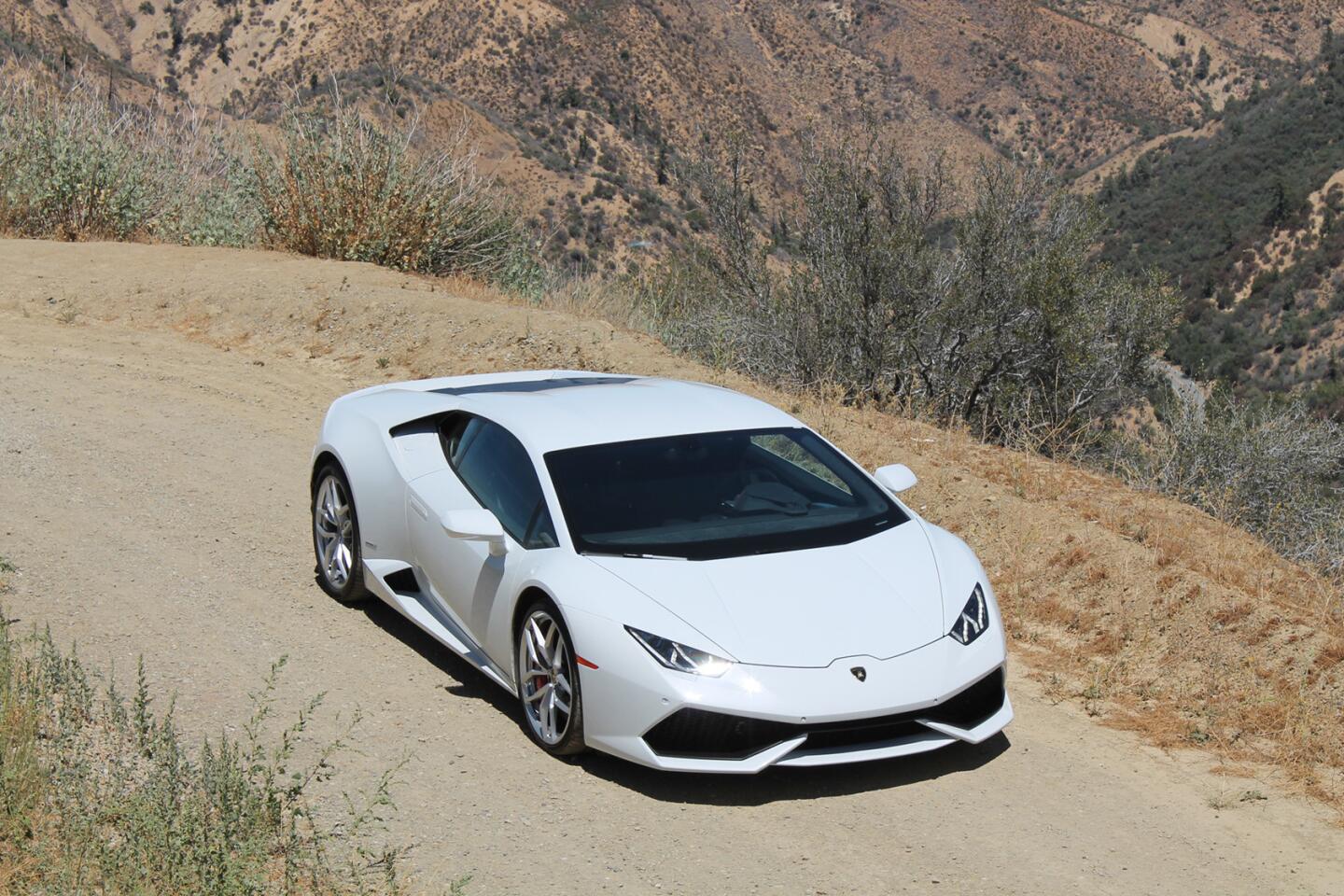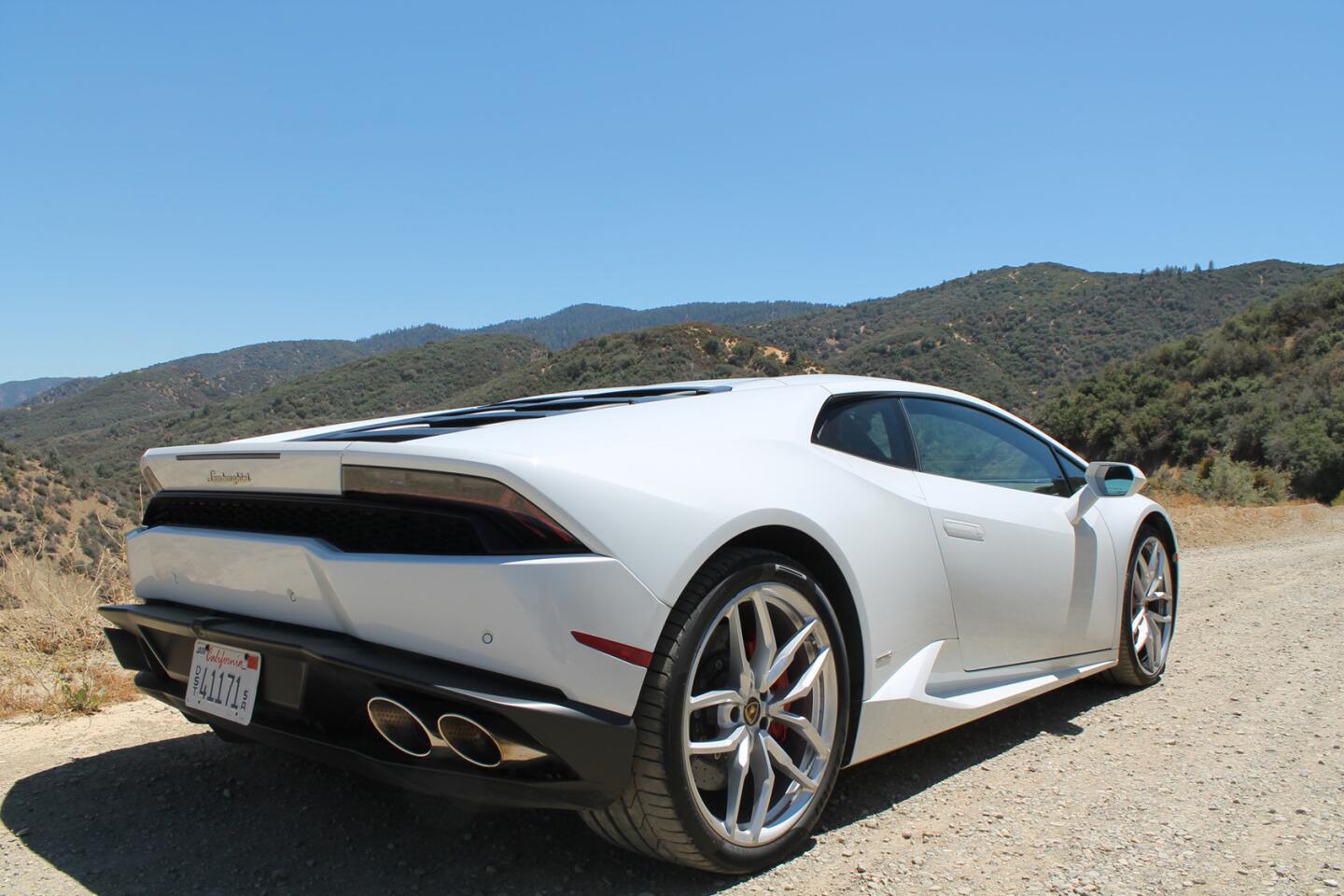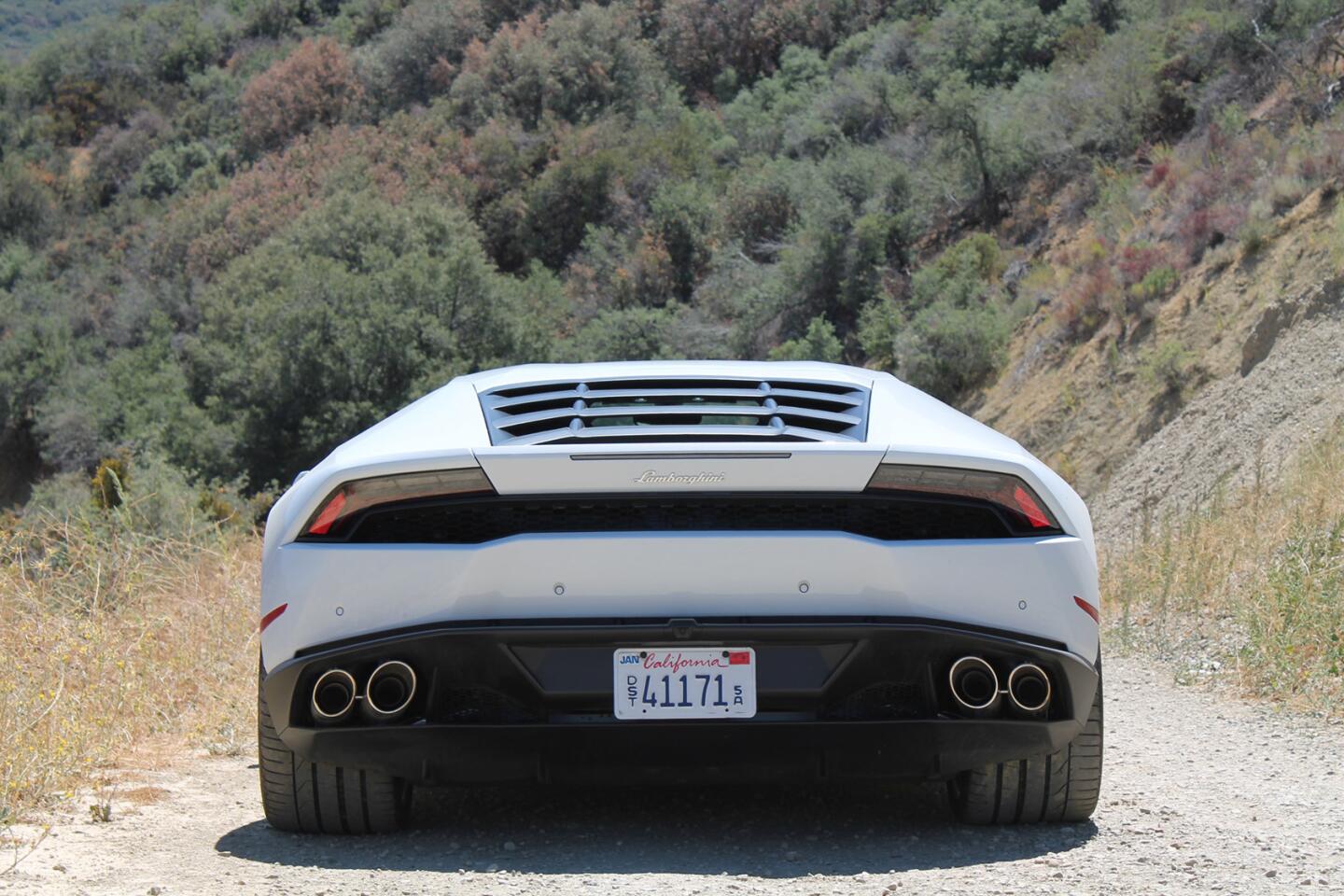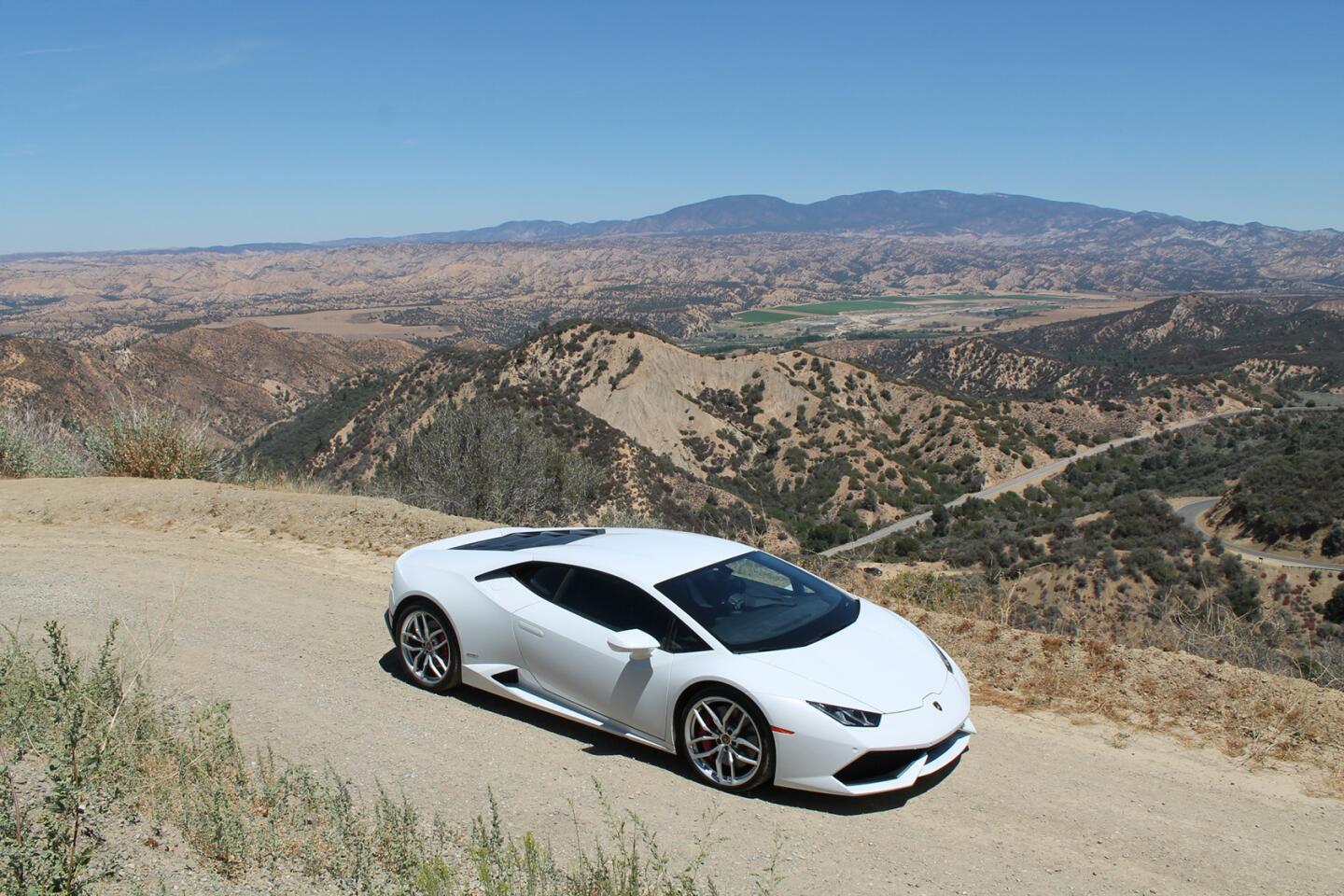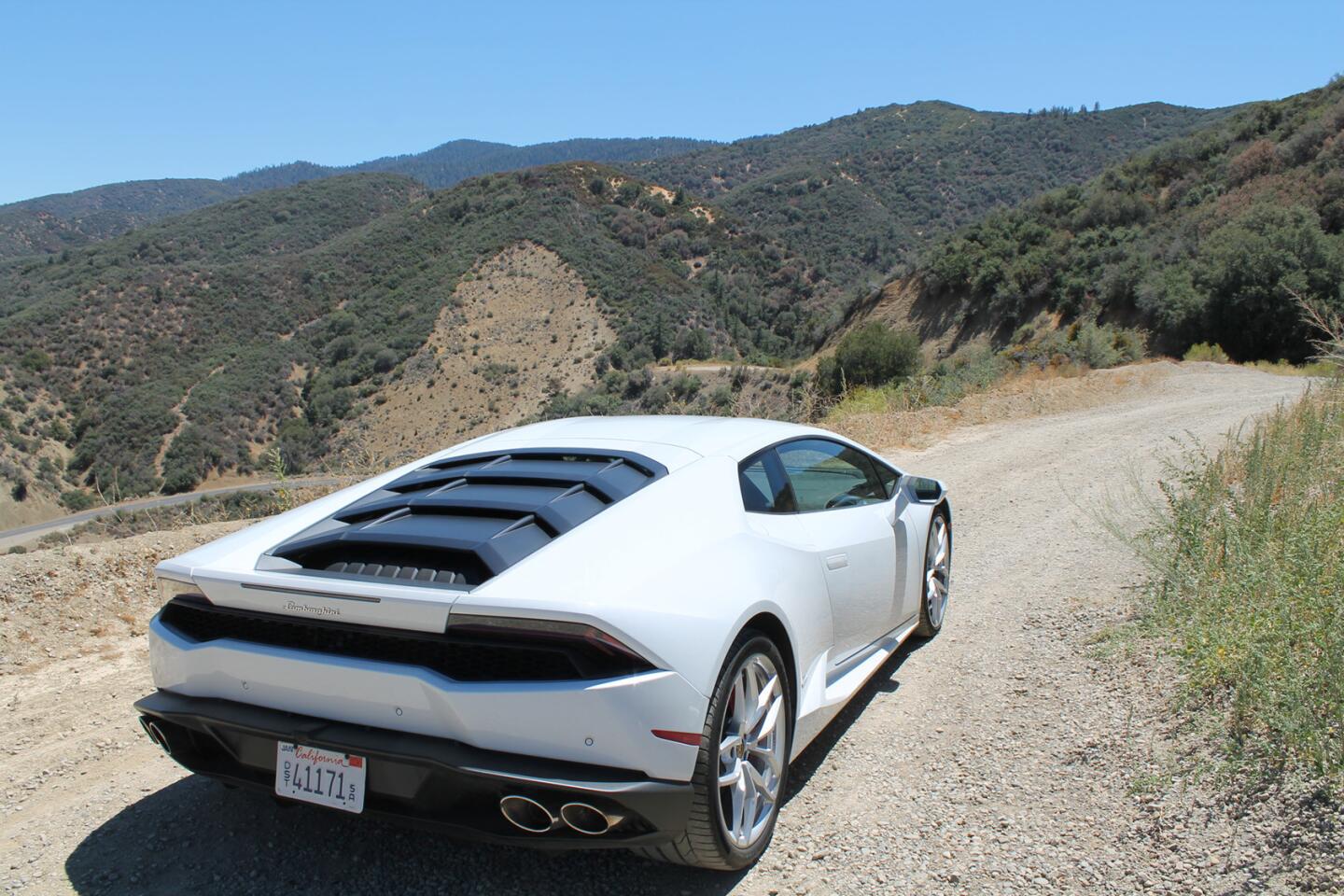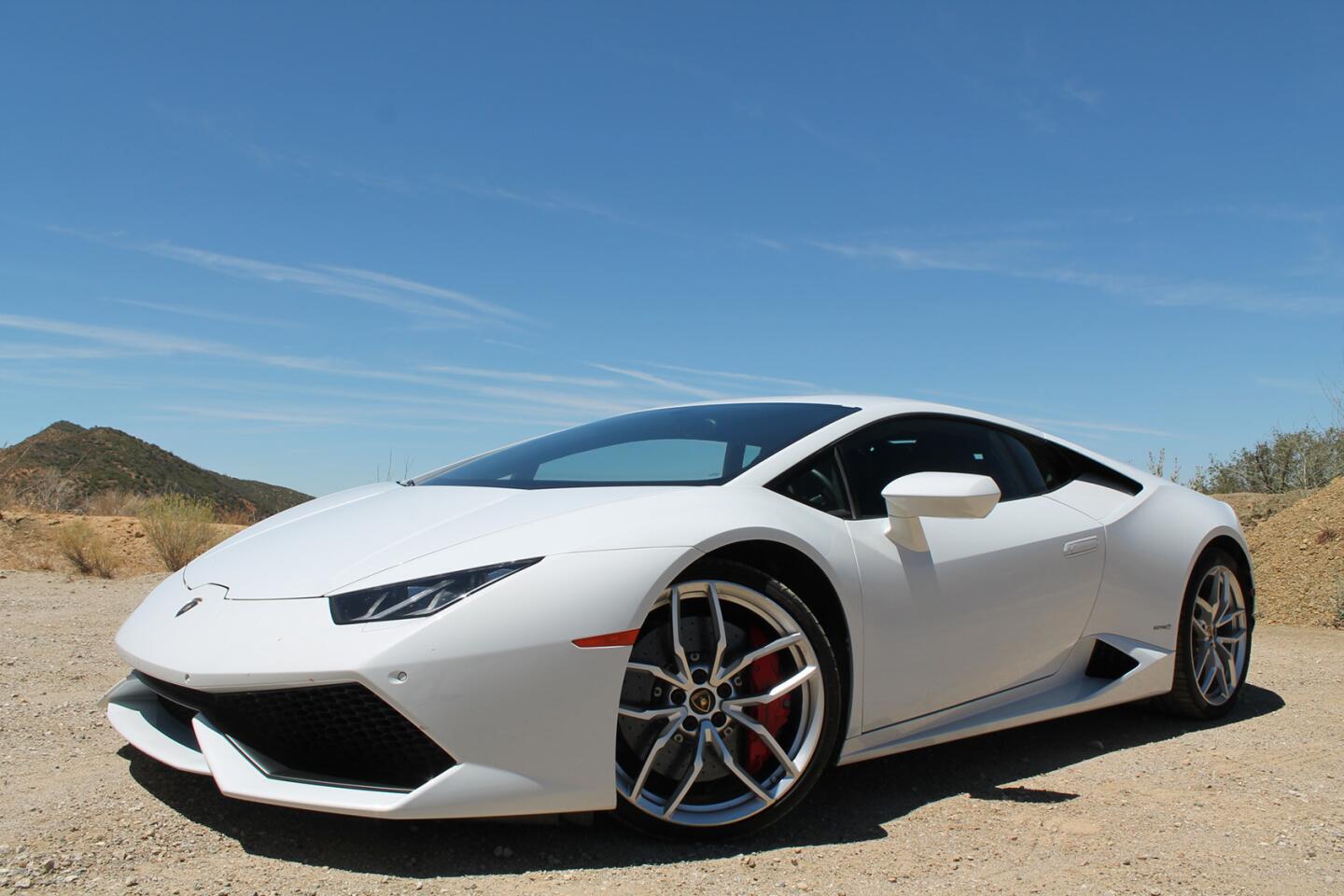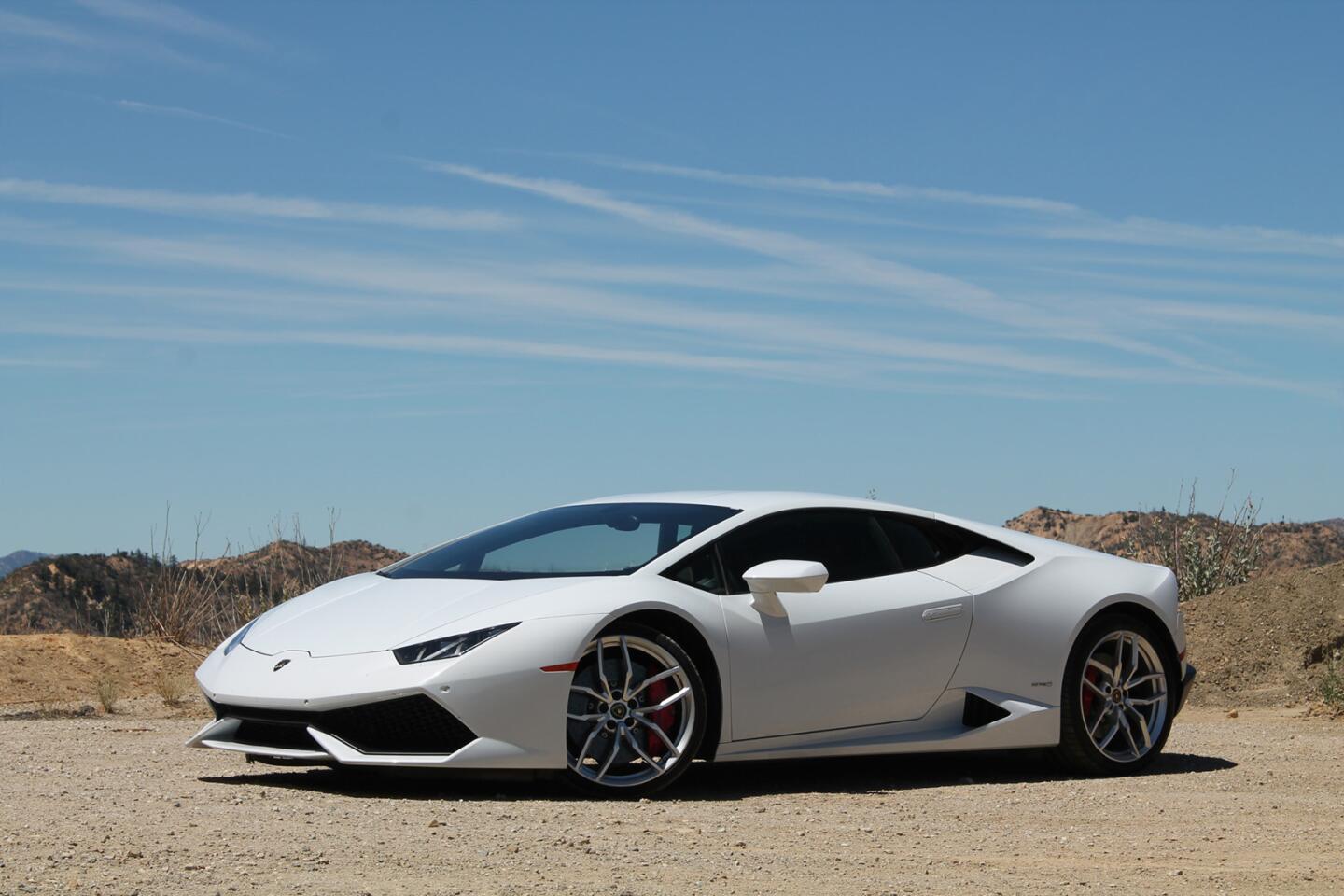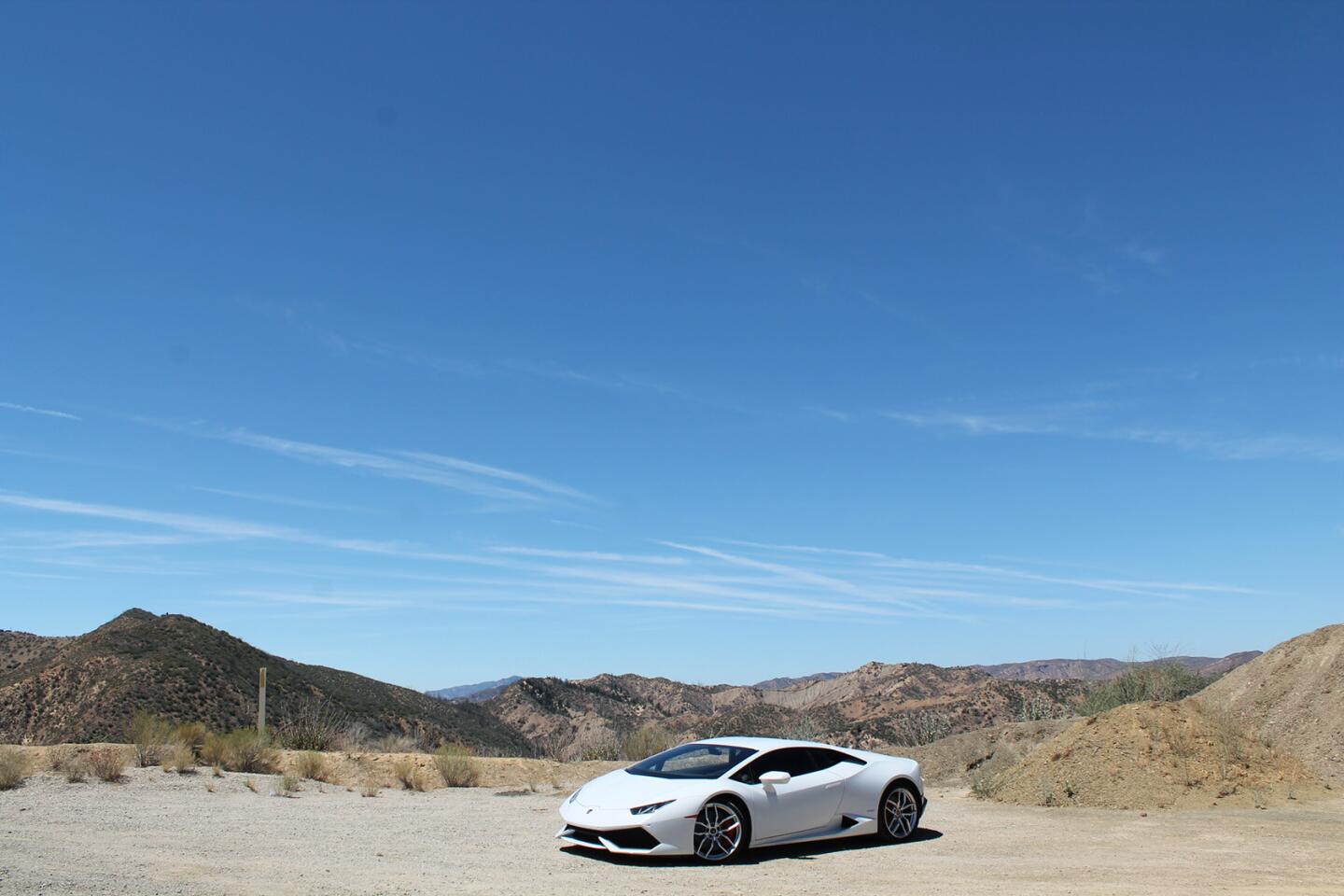Review: Lamborghini’s Huracan mature, rebellious; Ferrari 458 Speciale, McLaren 650S
- Share via
Lamborghinis can be called many things — brutish, temperamental, sexy, subtle as a Sherman tank in a school zone.
Refinement has never been part of the formula, until the 610-horsepower Huracan went on sale last month.
This low-slung supercar replaces the brand’s Gallardo, the single most popular model in the company’s history, with more than 14,000 sales globally.
But the Gallardo was far from perfect. And by the end of its 10-year life span, it had grown antiquated compared with similarly priced and powered exotics, including Ferrari’s 458 Italia and McLaren’s 12C and 650S.
So for this new generation of “approachable” exotic cars — the Huracan starts at a cool $242,445 — Lamborghini relied more heavily on the vast engineering resources of its parent company, Volkswagen Group. The resulting Huracan is a far more drivable, nuanced car than its predecessor, though it manages to hold on to most of the anti-establishment mentality that has always underpinned Lamborghinis.
In keeping with Lamborghini tradition, the 2015 Huracan is named for a bull that collided with a sword in the late 1800s.
The throbbing heart of this mid-engined beast is a 5.2-liter V-10 engine that makes 610 horsepower and 413 pound-feet of torque. With standard all-wheel-drive clawing at the pavement, this Huracan blasts from zero to 60 mph in 2.5 seconds, according to Car and Driver (Lamborghini says 3.1 seconds).
But it’s the Huracan’s transmission that adds the refinement. Gone are the Gallardo’s manual transmission and its optional — and cranky — single-clutch automated manual. In their place is a delightful seven-speed dual-clutch gearbox with a massive paddle shifter popping out of the steering column.
Carbon-ceramic disc brakes are standard on all Huracans. Our loaded $279,345 tester came with a host of options including a $2,400 Dynamic Power Steering package and a $6,900 adaptive suspension package that also lifted the nose for those pesky Beverly Hills speed bumps.
All this is bolted to an entirely new aluminum and carbon fiber chassis wrapped in an aluminum wedge of a body. The exterior complements the Huracan’s refined feel with a mature and uncharacteristically tasteful exterior design. Still, no one will mistake the Huracan for anything but a Lamborghini.
Inside, the Huracan’s interior expands on the fighter-jet aesthetic initiated by the larger Aventador model, going so far as to put the car’s console-mounted starter button under a bright red flip-up toggle.
The driver now stares at a fully digital and customized instrument panel, including a navigation display that’s been relocated from the now screenless dashboard. The cabin is more comfortable than the Gallardo, but just as loud; road noise leaks in everywhere.
Weight is essentially the same as the Gallardo, around 3,300 pounds for this all-wheel-drive car.
All this gear makes the Huracan immensely satisfying. The engine fires up with a startled roar before settling down to a hearty idle. At speed, a raucous roar flows from the four fat tailpipes; downshifts spark an evil cackling, like a dragon coughing up firecrackers.
The new gearbox is a particular highlight, transforming this Lamborghini into a supercar indeed. The shifts are smooth, precise and quick regardless of whether the car or the driver is controlling them.
The Huracan’s engine has a wide power band, which means you’re never grasping for acceleration if you shoot out of a corner in too high a gear. In the car’s mid-level Sport mode (there’s also Strada for daily driving and Corsa for track driving), the transmission walks the engine smoothly up to redline.
The car also uses the adjustable suspension to great effect, providing a smooth, compliant ride suitable for daily driving. Body roll is nicely controlled, and the car always feels planted when surging out of a corner.
Worth skipping entirely was the optional variable-ratio steering. It was the Huracan’s worst feature, especially in light of the tight, dynamic steering in the outgoing Gallardo. Here, it’s far too synthetic, making it hard for the driver to sense the car’s movements at high speeds or in hard corners. That’s a big flaw in a supercar with 610 horsepower.
As you might expect on an all-wheel-drive car, the handling is neutral, with a hint of understeer. Driven hard, the Huracan is predictable and eager, but there’s more gradation to it than something like a GT-R, which uses pure speed to compensate for driver miscues.
At the same time, the Huracan isn’t as threatening as many earlier Lambos. Some of the brand’s faithful may miss the rush of not knowing whether they’ll end up at home or in a ditch. But this maturity — and the refined coordination of transmission, suspension and design — finally makes Lamborghini’s entry-level offering a true supercar.
Ferrai 485 Speciale
If Ferrari is the royal family of automobiles, its 458 Speciale is the headline-stealing rebellious offspring.
Loud, rude and eager to shock, the Speciale uses the esteemed 458 Italia as a jumping-off point for a much more raw and rewarding driving experience.
The changes start with the engine. Ferrari rejiggers the Italia’s 4.5-liter V-8 to be lighter, more responsive and powerful. It now has 596 horsepower versus the Italia’s 562, while torque remains the same at 398 pound-feet.
A reprogrammed seven-speed dual-clutch transmission sends enough of this power to the rear wheels for a zero-to-60-mph time of three seconds, Ferrari said.
Active aerodynamics have been designed into the car to maximize down force. Computer-controlled flaps and dams open and shut, depending on the car’s speed, to provide additional grip on the road.
The car’s singular purpose is clear from the list of options — or the lack of them. The stereo, sound deadening, floor mats and door trim have all been jettisoned in the name of weight. The windows and seats are thinner, the 20-inch wheels are lighter; the rear glass covering the engine is now a Lexan panel. The Speciale’s 3,075 curb weight is around 200 pounds lighter than the Italia.
The result of such subtractions — paired with the retuned engine — is one of the most thrilling, predictable and communicative cars on the market. It forms a mind-meld with the driver, relaying every nuance of the car’s grip on the road.
The engine races easily to its 9,000-rpm redline by way of the wonderfully linear throttle. The NASA-worthy stability software works invisibly with the driver to keep this car’s shiny side up. The retuned suspension’s adjustable magnetic dampers and stiffer springs all but eliminate body roll.
The $288,000 starting price for this version is a cool $55,000 more than the Italia. The upgrade is worth the money — and a relative bargain compared to even more exotic million-dollar supercars with 1,000 horsepower and goofy scissor doors. This 458 Speciale steals hearts just as easily as headlines.
McLaren 650S
The 650S is the supercar McLaren should have built three years ago.
Instead we got the MP4-12C, a capable but muted car. Released in 2011, the 12C could surge around a track with the best of them, but did so with less drama and less driver engagement than its rarefied peers.
With a long history of building some of the world’s most formidable Formula 1 cars — as well as a pair of road-going supercars that leave their drivers speaking in tongues (the F1 in the 1990s and the P1 hybrid this year) — McLaren knew it could do better.
So the British automaker gave the 12C an overhaul, making changes to about a quarter of the car, and slapping the new 650S name on it.
At its core, much of the car remains the same. A tidy 3.8-liter, twin-turbocharged V8 hooks up to a seven-speed dual-clutch gearbox and directs 641 horsepower and 507 pound-feet of torque to the rear wheels.
That’s a gain of 25 horsepower and 64 pound-feet of torque over the 12C. This updated model packs on an extra 75 pounds, for 3,020 total, but its zero-to-60-mph time drops by a hair to 2.9 seconds.
The rear end looks essentially the same, as does the cabin. The front clip is completely new and echoes the curved lines of its P1 sibling. It finally gives this entry-level McLaren the head-turning panache that should come standard on anything with a $269,200 base price.
Underneath the gobsmacking body, the carbon-fiber tub remains, but the suspension has been retuned, the carbon-ceramic brakes have been updated for a more linear feel and the stability control has been reprogrammed. So has the exhaust system, to allow more of the V-8 growl to sneak out of the tailpipes.
The 12C was always deft on track and road, and the 650S is now deft with an edge, as if someone poured Red Bull in the 12C’s gas tank. The 650S is more lively, more visceral and responds to your commands immediately, be they from the foot or hand. The steering is flawless.
The adjustable suspension setup on the 12C was already the best in the industry, giving occupants pillow-soft compliance on rough public roads but tarmac-hugging control in high-stakes situations. Fortunately, none of this changes on the 650S.
If and when the rear end breaks free, it does so predictably. The stability control software works so well that even amateur drivers can pull off power slides worthy of a Hollywood chase scene.
The downside is when it’s time to slow down. The carbon ceramic brakes on several of the models we tested felt surprisingly spongy, as if someone hid a deflated soccer ball behind the brake pedal.
And as much as McLaren woke up the beast that was suppressed in the 12C, the resulting 650S is still more subdued than a rival Ferrari or Lamborghini. But that’s no longer a bad thing.
david.undercoffler@latimes.com
Twitter @latimes_driven
